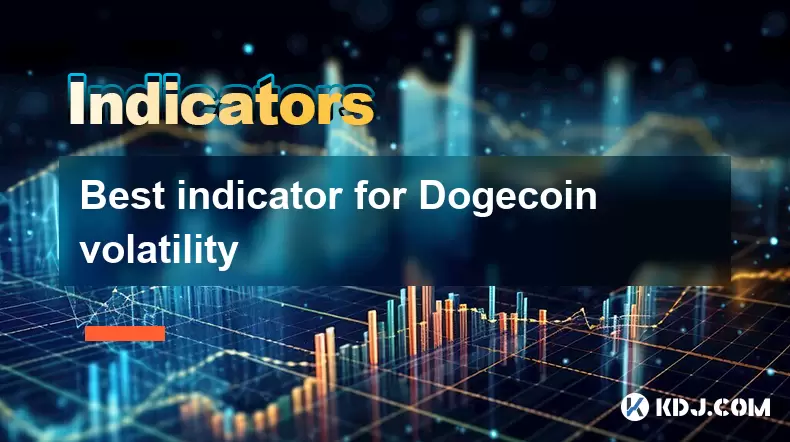-
 Bitcoin
Bitcoin $110,957.0809
1.97% -
 Ethereum
Ethereum $2,735.7206
4.87% -
 Tether USDt
Tether USDt $1.0002
0.00% -
 XRP
XRP $2.3924
3.71% -
 BNB
BNB $668.8382
1.31% -
 Solana
Solana $156.4586
3.66% -
 USDC
USDC $1.0000
-0.01% -
 TRON
TRON $0.2901
0.93% -
 Dogecoin
Dogecoin $0.1819
6.79% -
 Cardano
Cardano $0.6192
5.41% -
 Hyperliquid
Hyperliquid $40.4637
4.42% -
 Sui
Sui $3.0207
4.29% -
 Bitcoin Cash
Bitcoin Cash $507.8258
1.72% -
 Chainlink
Chainlink $14.1774
2.42% -
 Stellar
Stellar $0.2867
11.94% -
 UNUS SED LEO
UNUS SED LEO $9.0125
-0.63% -
 Avalanche
Avalanche $19.2747
5.23% -
 Shiba Inu
Shiba Inu $0.0...01244
5.05% -
 Hedera
Hedera $0.1704
6.24% -
 Toncoin
Toncoin $2.8382
1.37% -
 Litecoin
Litecoin $90.4014
3.56% -
 Monero
Monero $322.4151
3.33% -
 Polkadot
Polkadot $3.6133
4.86% -
 Dai
Dai $1.0000
-0.01% -
 Ethena USDe
Ethena USDe $1.0010
0.06% -
 Uniswap
Uniswap $8.3323
8.60% -
 Bitget Token
Bitget Token $4.3790
1.31% -
 Pepe
Pepe $0.0...01087
6.88% -
 Aave
Aave $297.1808
2.13% -
 Pi
Pi $0.4688
2.23%
Best indicator for Dogecoin volatility
2025/07/09 08:49

Understanding Dogecoin Volatility
Dogecoin (DOGE), originally created as a meme cryptocurrency, has evolved into one of the most volatile digital assets in the market. Its price movements are often influenced by social media trends, celebrity endorsements, and macroeconomic factors. Volatility refers to the degree of variation in trading prices over time. For traders and investors, identifying the best indicator for Dogecoin volatility is essential to make informed decisions.
Unlike traditional financial assets, cryptocurrencies like Dogecoin exhibit extreme price swings within short periods. This makes understanding and measuring volatility not just important but critical for risk management.
Why Measuring Volatility Matters for DOGE
Measuring volatility helps investors anticipate potential price swings and adjust their strategies accordingly. In the case of Dogecoin, which often reacts strongly to news or tweets from high-profile individuals like Elon Musk, volatility indicators can provide early signals of impending market moves.
High volatility means both high risk and high reward potential. Traders who understand how to interpret volatility metrics can better position themselves to enter or exit trades at optimal times. Ignoring volatility can lead to unexpected losses or missed opportunities.
Common Volatility Indicators Used in Cryptocurrency Trading
Several technical indicators are commonly used to assess asset volatility in the crypto space:
- Bollinger Bands: These bands expand and contract based on recent price action, indicating whether the current volatility is high or low.
- Average True Range (ATR): This measures market volatility by decomposing the entire range of an asset's price over a given period.
- Volatility Index (VIX): Though primarily used in stock markets, crypto derivatives also have similar volatility indices that reflect expected future volatility.
- Standard Deviation: This statistical measure shows how much price deviates from its average, helping identify abnormal price behavior.
Each of these tools has its strengths when applied to Dogecoin. However, due to the unique nature of DOGE’s market dynamics, some may be more effective than others.
How Bollinger Bands Can Help Track DOGE Volatility
Bollinger Bands are among the most popular tools for assessing volatility in real-time. They consist of a moving average line flanked by two standard deviation lines above and below it. When the bands widen, it indicates increased volatility; when they contract, it suggests decreased volatility.
For Dogecoin traders, using Bollinger Bands can help identify potential breakout points. If the price touches or exceeds the upper band, it could signal overbought conditions. Conversely, touching the lower band might suggest oversold levels. These signals become even more significant during high-volume events, such as trending topics on Reddit or viral mentions on Twitter.
To apply Bollinger Bands effectively:
- Set the default parameters (20-day simple moving average and 2 standard deviations).
- Watch for "squeezes" where the bands tighten—this often precedes sharp price movements.
- Combine with volume analysis to confirm breakouts or breakdowns.
Using Average True Range for Dogecoin Volatility Assessment
The Average True Range (ATR) is another powerful tool for evaluating Dogecoin's volatility. Unlike Bollinger Bands, ATR doesn’t indicate trend direction but rather the magnitude of price movement. It calculates the true range over a specified period and averages it out.
When applying ATR to Dogecoin:
- A rising ATR indicates increasing volatility, often seen during strong rallies or sell-offs.
- A falling ATR suggests consolidating or quieter market conditions.
- Traders can use ATR to set stop-loss levels proportionate to the current volatility environment.
To implement ATR effectively:
- Use a 14-period setting as a baseline.
- Compare ATR values across different timeframes to get a clearer picture.
- Adjust trade sizes based on ATR readings—higher volatility may require smaller positions to manage risk.
Combining Tools for More Accurate Volatility Analysis
Relying on a single indicator may not provide a complete picture of Dogecoin’s volatility. Combining multiple tools enhances accuracy and reduces false signals. For instance, using Bollinger Bands alongside ATR and volume data gives a multi-dimensional view of the market.
Here’s how you can integrate these tools:
- Overlay Bollinger Bands on your chart to visualize price extremes.
- Add ATR beneath the chart to monitor changes in volatility intensity.
- Include volume bars to confirm whether price moves are supported by strong buying or selling pressure.
This combination allows traders to distinguish between genuine breakouts and false signals. During sudden spikes driven by hype, this layered approach can prevent premature entries or panic exits.
Frequently Asked Questions (FAQ)
Q1: Is Dogecoin more volatile than other major cryptocurrencies?
Yes, Dogecoin tends to be more volatile than larger-cap cryptocurrencies like Bitcoin or Ethereum due to its relatively low market capitalization and heavy dependence on social sentiment.
Q2: Can I use volatility indicators for long-term investment in Dogecoin?
While volatility indicators are more suited for short-to-medium term trading, long-term investors can still benefit by understanding overall market conditions and adjusting entry or exit points accordingly.
Q3: Are there specific platforms that offer advanced volatility tools for DOGE?
Platforms like TradingView, CoinMarketCap Pro, and CryptoCompare offer integrated volatility analysis tools tailored for cryptocurrencies including Dogecoin.
Q4: How often should I check volatility indicators for Dogecoin?
It depends on your trading strategy. Day traders may check every few minutes, while swing traders might review them daily or weekly. Consistency in monitoring helps spot patterns and improve decision-making.
免責事項:info@kdj.com
提供される情報は取引に関するアドバイスではありません。 kdj.com は、この記事で提供される情報に基づいて行われた投資に対して一切の責任を負いません。暗号通貨は変動性が高いため、十分な調査を行った上で慎重に投資することを強くお勧めします。
このウェブサイトで使用されているコンテンツが著作権を侵害していると思われる場合は、直ちに当社 (info@kdj.com) までご連絡ください。速やかに削除させていただきます。
- PIネットワーク:AIで世界経済と未来を促進する
- 2025-07-10 12:50:12
- Crypto Hack:4200万ドルの排水溝の後に提供されるGMXバウンティ
- 2025-07-10 12:50:12
- 暗号の清算とビットコインのワイルドライド:次は何ですか?
- 2025-07-10 12:30:12
- ビットコインは史上最高に爆発します:制度上の勢いは本当の取引ですか?
- 2025-07-10 13:10:12
- ビットコインのワイルドライド:記録的な高値と価格の急増が説明されました
- 2025-07-10 13:10:12
- 2025年のクラウドマイニング:パッシブビットコインとAltcoin収益のためのトッププラットフォーム
- 2025-07-10 13:15:11
関連知識

How to trade Dogecoin based on funding rates and open interest
2025-07-07 02:49:34
<h3>Understanding Funding Rates in Dogecoin Trading</h3><p>Funding rates are periodic payments made to either long or short traders ...

What is the 'God Mode' indicator for Dogecoin
2025-07-07 16:42:48
<h3>Understanding the 'God Mode' Indicator</h3><p>The 'God Mode' indicator is a term that has emerged within cryptocurrency trading ...

Using Gann Fans on the Dogecoin price chart
2025-07-07 21:43:10
<h3>Understanding Gann Fans and Their Relevance in Cryptocurrency Trading</h3><p>Gann Fans are a technical analysis tool developed b...

How to spot manipulation on the Dogecoin chart
2025-07-06 12:35:49
<h3>Understanding the Basics of Chart Manipulation</h3><p>Chart manipulation in the cryptocurrency space, particularly with Dogecoin...

Dogecoin market structure break explained
2025-07-07 02:51:32
<h3>Understanding the Dogecoin Market Structure</h3><p>Dogecoin, initially created as a meme-based cryptocurrency, has evolved into ...

How to backtest a Dogecoin moving average strategy
2025-07-08 04:50:05
<h3>What is a Moving Average Strategy in Cryptocurrency Trading?</h3><p>A moving average strategy is one of the most commonly used t...

How to trade Dogecoin based on funding rates and open interest
2025-07-07 02:49:34
<h3>Understanding Funding Rates in Dogecoin Trading</h3><p>Funding rates are periodic payments made to either long or short traders ...

What is the 'God Mode' indicator for Dogecoin
2025-07-07 16:42:48
<h3>Understanding the 'God Mode' Indicator</h3><p>The 'God Mode' indicator is a term that has emerged within cryptocurrency trading ...

Using Gann Fans on the Dogecoin price chart
2025-07-07 21:43:10
<h3>Understanding Gann Fans and Their Relevance in Cryptocurrency Trading</h3><p>Gann Fans are a technical analysis tool developed b...

How to spot manipulation on the Dogecoin chart
2025-07-06 12:35:49
<h3>Understanding the Basics of Chart Manipulation</h3><p>Chart manipulation in the cryptocurrency space, particularly with Dogecoin...

Dogecoin market structure break explained
2025-07-07 02:51:32
<h3>Understanding the Dogecoin Market Structure</h3><p>Dogecoin, initially created as a meme-based cryptocurrency, has evolved into ...

How to backtest a Dogecoin moving average strategy
2025-07-08 04:50:05
<h3>What is a Moving Average Strategy in Cryptocurrency Trading?</h3><p>A moving average strategy is one of the most commonly used t...
すべての記事を見る

























































































